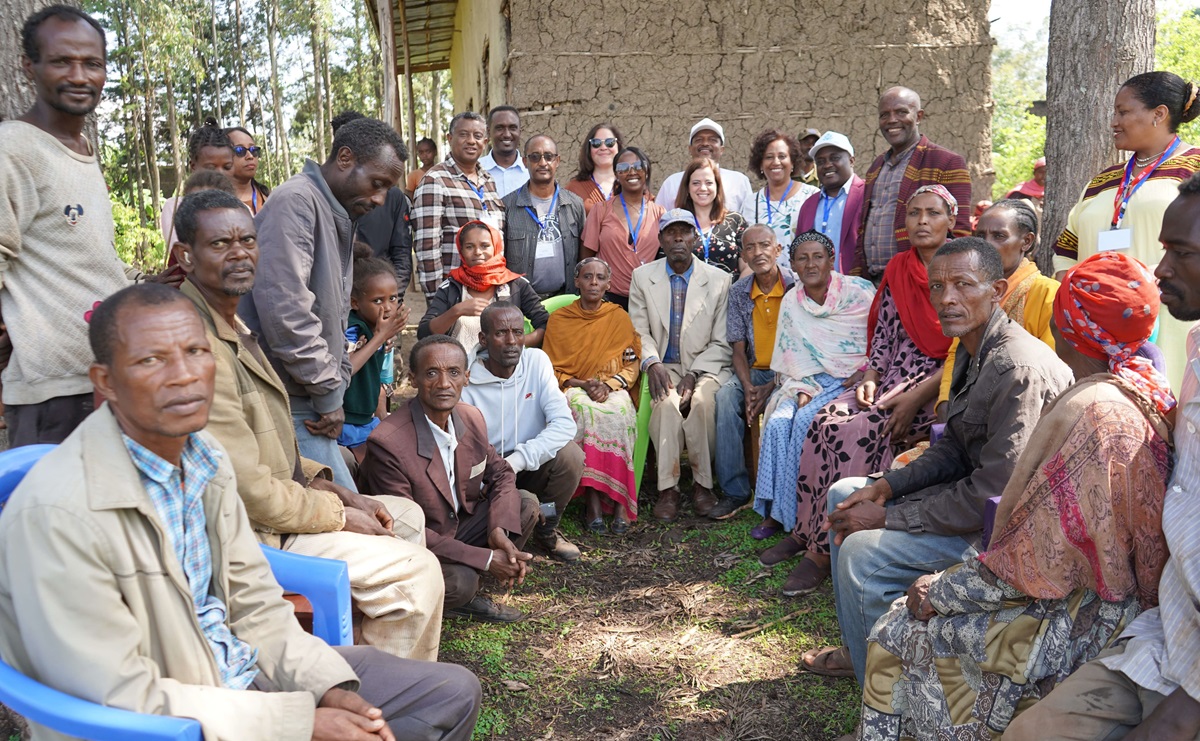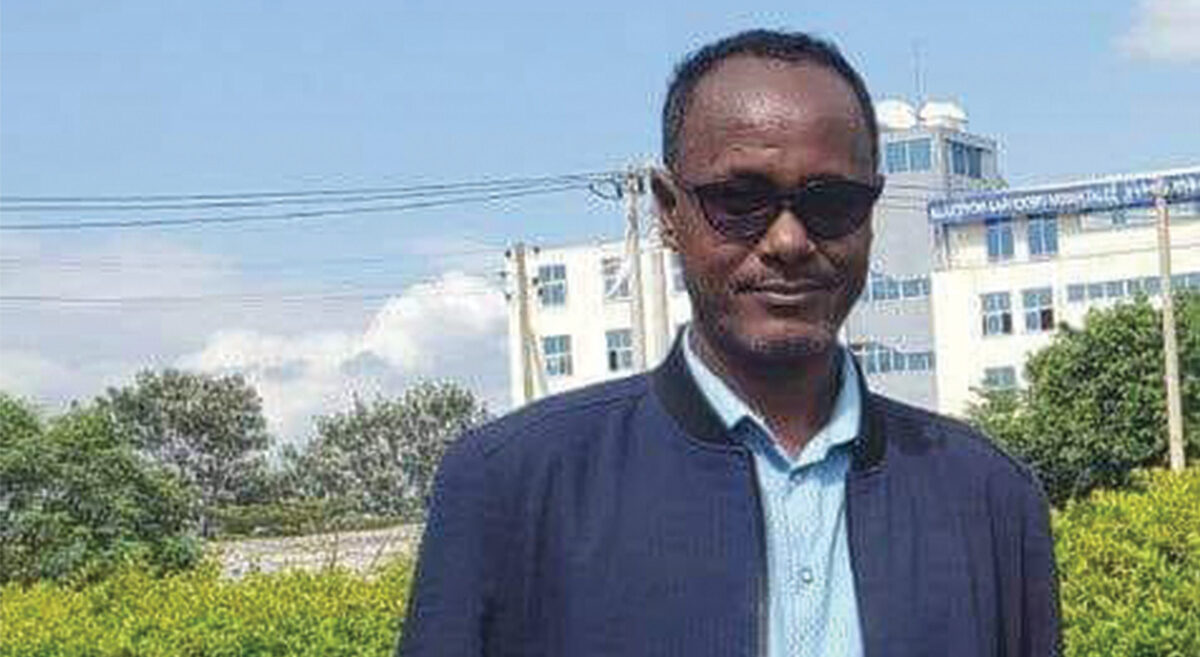Commentary: Cracks in the system: Unearthing part of the mysteries behind Ethiopia’s national exam catastrophe

By Aytaged Sisay Zeleke
Introduction
The results of the Ethiopian high school leaving certificate exams in the past two years (2022 and 2023) have been catastrophic. Only 3.3% of the students who took the exam in 2022 (896,520 students) scored 50% and above, which is the minimum requirement to join higher education. Similarly, in 2023, only 3.2% of the students (845,099 students) achieved the required score. The underperformance of students in Ethiopia’s national exams is a pressing concern with far-reaching implications for the nation’s educational landscape.
To resolve the complex causes behind this issue, it is necessary to examine various factors contributing to this decline. The many-sided challenges faced by students extend beyond mere academic struggles and the introduction of a stringent exam proctoring procedure introduced by the current Minister of Education, Professor Berhanu Nega, and encompass socioeconomic inequalities, the enduring impact of conflict and war, and the strain caused by economic instability.
I wholeheartedly concur with the recent statement made by the Minister of Education during his address to the Ethiopian parliament, particularly in response to the accountability inquiry raised by parliamentarian Dr. Negeri. Dr. Negeri, with a wealth of experience spanning various roles in the education system, from a teacher to a university dean, has a deep and extensive understanding of the Ethiopian educational landscape. Yet, he persisted in holding Professor Berhanu, a diaspora appointee with less than two years of direct involvement in the system, accountable for the recent decline in national exam results.
Regardless of personal opinions about the Professor, it is fundamentally unjust to single him out and place the blame solely on his shoulders for the educational challenges we face as a society. In fact, Professor Berhanu took bold steps to rectify the deficiencies in the national exam proctoring system, shedding light on one of the underlying issues we have been facing within the education system. It is imperative that we acknowledge this truth and unite to collectively address the problem at hand.
Nonetheless, it is crucial to underscore that the Ministry of Education currently led by Professor Berhanu should assume responsibility for ensuring the quality and standards of the national exams conducted under his supervision. I encourage all stakeholders and parliamentarians to press the Ministry of Education to take accountability by rigorously evaluating the past two years exam qualities, including aspects like reliability, validity, item discrimination, and difficulty levels. Furthermore, it is equally important that the Ministry commits to a comprehensive plan of action to conduct research aimed at identifying the root causes of the declining exam results and implementing interventions as swiftly as possible.
Professor Berhanu’s remark in the recent parliament meeting, highlighting that “every stakeholder has a share in the deteriorated quality of Ethiopian education,” resonates deeply with me. This sentiment underscores that the responsibility for the state of our education system should be shared among all relevant parties. In this spirit, I endeavor to share my insights in the hope of reminding and inspiring stakeholders to approach the examination results with a holistic perspective. Together, we must explore the multifaceted factors contributing to the current poor performance in Ethiopian national exams and collaborate on meaningful interventions to address this pressing issue.
According to the head of the Ministry of Education, his office is committed to embarking on interventions that address some of the perceived problems directly related to the education system (e.g., curriculum, teachers, and educational leaders’ leadership quality. This is the right step towards addressing the issue, but perceptions of the causes of the problems should be justified by data; reliable evidence helps to plan, prioritize interventions and mobilize resources. Thus, conducting research in the mentioned areas and other factors affecting the deteriorated education system should come first before implementing perceived solutions.
The current public debates and concerns about the causes of the significant decline of the Ethiopian high school national exam seem to capitalize as if the failure is solely the result of the low quality of the education system. Even though I agree with this view, I also think that other equally or more important possible causes might have contributed to the current poor national exam results. To that end, I suggest the concerned stakeholders consider conducting interdisciplinary research to understand the issues deeply.
Part of the aim of this article is therefore to inspire interested stakeholders of the Ethiopian national examination not to limit their investigation of the causes and research only to academic factors; together with issues directly related to the teaching and learning processes, I suggest including a non-academic framework in their research pursuit in the area under focus. To support and promote such efforts, I attempt to highlight some nonacademic interrelated factors that might have contributed to the disastrous causes of the underperformance of high school completers in the 2022 & 2023 academic years. Then I conclude by suggesting some actions to address the issue.
The Unseen Shackles
How Socioeconomic Struggles Might Have Shattered Dreams of National Exam Success: Socioeconomic disparities present a significant barrier to students’ success in education; thus, students’ socioeconomic status can affect the national exam results. Students from underprivileged backgrounds often confront numerous challenges.
Limited Access to Resources and Finance: As one of the poorest nations on the planet, most Ethiopians’ suffrage due to a dearth of basic resources for life and education has been a well-known public secret. Recently, economic instability and soaring costs have made life very challenging even for middle-class families in Ethiopia; particularly, for students from low-income families to afford essential educational resources such as textbooks, stationery, and study materials means sacrificing part of their daily needs like escaping a lunch or dinner. This lack of access to necessary resources unquestionably hinders students’ preparedness for the national exam and contributes to poor performance in the exam.
Observations and different media outlets have portrayed that high costs of living and economic instability in Ethiopia often force students to prioritize work or other income-generating activities over their studies. This situation is highly prevalent in rural Ethiopia, in which schedules to participate in work activities and attend school competitively overlap; Orkin’s (2012) research found that the nature of some work responsibilities does not allow taking breaks to attend classes and resume the remaining tasks after school.
About 80% of children whose ages are eight and above have to support their families in one way or another. Disturbingly, another study reported that many Ethiopian Children begin work at the age of four. It was reported that 55 % of students in rural parts of Ethiopia missed classes for a week due to work. As per the Ethiopian National Labor survey (2014), in rural Ethiopia, boys and girls whose ages range between 10-14 were employed and worked 32 and 23 hours per week respectively. The need to contribute to their family’s finances can consume significant amounts of time and energy; due to this fact, part of the past two years national examinees might have been left with limited resources to allocate towards exam preparation.
Educational Support at Home: As per the most recent available World Bank report (2017), the recent literacy rate in Ethiopia is about 52%. One can imagine that this percentage is even lower in the rural areas than in the urban areas of the country. Also, the level of high-level education the people counted in the 52% as literate is a difficult issue to assume; thus, it is clear that parents’ abilities to support their children academically and make them well-prepared to pass national high school exams is none or insignificant. In Ethiopia, many students come from underprivileged backgrounds; thus, they lack the necessary educational support at home. Could this lack of support have significantly influenced their study habits and preparedness for the exams?
Educational Disparities: The disparities in access to resources and support create an uneven playing field, favoring students from more privileged socioeconomic backgrounds who have better access to tutors, educational resources, and a supportive learning environment. This inequality contributes to the lower failure rate among students from higher socioeconomic strata. Even though Ethiopia has a nationally standardized high school curriculum, schools in the different regions play crucial roles independently in implementing the curriculum, and they also allocate budget for that purpose. However, the regions in the country do not have comparable resources to equally invest in the quality of education; this might have also created a disparity in the passing rates of the national examination in the different regions.
Inadequate Nutrition and Health: Economic instability can also lead to a lack of proper nutrition and healthcare both of which are crucial for optimal cognitive function and academic performance. Poverty in Ethiopia has been a piece of repeated news in international media outlets for several years; thus, it is a likely inference to say students in Ethiopia experience hunger, malnutrition, or health issues. This suggests that students who sat for the national exam might have more likely struggled with concentration, memory, and overall academic success.
Battle-Scarred Minds
How the Ongoing and Endless Wars and Conflict Could Crush Students’ Exam Results: The ongoing conflict and wars in Ethiopia have dire consequences for students’ academic performance.
Loss of Learning Opportunities: The displacement of families and the destruction of educational infrastructure have resulted in the loss of valuable learning opportunities. Many students have missed crucial exam preparation, classroom instruction, and access to educational resources, leading to a knowledge gap and heightened chances of exam failure. Could casting these missed learning opportunities as significant causes explain the decline in students’ exam performance?
Disruption of the Learning Environment: The ongoing conflict in Ethiopia has resulted in the widespread disruption of education, particularly in conflict-affected regions such as Tigray, Afar, Oromia, and Amhara.. Schools in these areas have been facing closure or operating under unsafe conditions, making learning and preparing for exams challenging for students to access quality education. This might be one of the reasons why students from the war and displacement zones didn’t do well in the recent national exams.
According to Global Citizen’s magazine, about 1.4 million students in the country’s war affected regions haven’t gone to school since March 2020. As schools became battlegrounds, they suffered destruction, looting, and exploitation by the warring parties. These disruptions have caused tremendous damage to the region’s education system. The absence of consistent and quality education in those areas due to the conflict has likely played a pivotal role in students’ poor performance in the recent national exam
Psychological Impact: The trauma and violence associated with war can have severe psychological consequences on students. In the past two or more years, Ethiopia has been in a state of emergency for several times which have been marked by curfews and limited rights to do some activities due to security and safety concerns. Also, there have been mass random detentions of civilians, possibly students and their family members, and the drone strikes made by the government’s army in some war zones can result in increased fear, stress, anxiety, and depression which can negatively impact a student’s ability to concentrate, retain information, and perform well in exams.
Areas affected by violence or civil unrest and also the state of emergency have imposed restrictions on movement, limiting students’ study time and opportunities for additional educational support. Furthermore, the instability has disrupted the school calendar and teacher availability, contributing to students’ poor exam results. It’s vital to investigate how these security issues have negatively affected students’ opportunities to succeed in the past two national exams.
In conclusion, these are just a few of the possible factors that might have contributed to the decline in student performance on Ethiopia’s national exam in the past two years ; indeed, this might also have been supported by the stringent exam proctoring procedures the Ministry of Education introduced last year. It is important to recognize that these factors are intricately linked, and their cumulative impact can profoundly affect students’ academic success. As we seek to improve student outcomes, it is vital to address these challenges and attempt for stability, equity, and inclusive education. Scholarly research, intervention, and educational leadership efforts should focus on these multifaceted issues to uplift the educational landscape in Ethiopia. It is vital to understand that while focusing on factors directly related to education, teaching, learning and assessment is crucial, this approach may only address a portion of the overarching issue, not the entirety of it.
Some Suggestions to Ponder Over
To address the challenges facing students in Ethiopia’s national exams, stakeholders must work together to implement holistic interventions that address the deeper and more complex causes of student underperformance. Here are some concrete suggestions for how stakeholders can work together to address the above nonacademic challenges.
Conduct Interdisciplinary Research: Concerned stakeholders, including the international research community, should consider conducting interdisciplinary research whose findings could add value to holistic interventions that address the deeper and more complex causes of student underperformance in national exams. The research should focus on the multifaceted challenges faced by students, including socioeconomic disparities, the impact of ongoing conflict, economic instability, and the lack of peace and stability.
Increase Access to Resources: To address the issue of limited access to resources, stakeholders should work towards increasing access to essential educational resources, including textbooks, stationery, and study materials. This can be achieved through the provision of scholarships, the construction of new schools, and the provision of educational resources to disadvantaged students.
Provide Educational Support at Home: To address the issue of limited educational support at home, stakeholders should work towards providing educational support to families from underprivileged backgrounds. This can be achieved through the provision of educational materials, training for parents on how to support their children’s education, and the establishment of community-based educational support programs.
Address the Impact of Conflict: To address the impact of conflict on students’ academic performance, stakeholders should work towards providing safe and secure learning environments for students in conflict-affected regions. This can be achieved through the construction of safe schools, the provision of psychosocial support to students, and the provision of educational resources to students affected by conflict.
Address Economic Instability: To address the impact of economic instability on students’ academic performance, stakeholders should work towards providing financial support to students from low-income families. This can be achieved through the provision of scholarships by resourceful local and international schools in the country , the establishment of community-based income-generating activities, and the provision of educational resources to students affected by economic instability.
Promote Inclusive Education: To address the issue of educational disparities, stakeholders should work towards promoting inclusive education that caters to the needs of all students, regardless of their socioeconomic background. This can be achieved through the provision of special education programs, the establishment of community-based educational support programs, and the provision of educational resources to disadvantaged students and regions.
Mental Health and Counseling Services: Recognize the psychological impact of socioeconomic disparities, war and conflict on students and establish counseling services and mental health support within schools to help students cope with emotional and psychological challenges.
Community Engagement: Encourage active involvement of local communities in the improvement of educational facilities and resources. This can include organizing community-driven initiatives to build and maintain schools, libraries, and extracurricular programs.
Technology Integration: Embrace modern technology to bridge educational gaps, especially in remote or conflict-affected areas. Provide students with access to digital resources and online learning platforms to supplement their education.
Nutrition Programs: Proper nutrition is essential for cognitive development and academic success. Thus, considering the development of school or regional education offices’ nutrition programs to ensure that students have access to healthy meals is useful. This could be done in collaboration with local and international NGOs, and food aid local and international organizations.
Monitoring and Evaluation: Establish a system for continuous monitoring and evaluation of the effectiveness of educational interventions. Regular assessments can help adjust strategies and allocate resources more efficiently.
Collaborative Partnerships: Foster collaborations between governmental bodies, non-governmental organizations, and international agencies to pool resources and expertise in addressing educational challenges. One important collaborator is the Ethiopian diaspora who can play a significant role in addressing part of the above non-academic issues affecting the quality of education in Ethiopia. Thus, the ministry of education should assume the leadership in strengthening the existing collaboration and also establishing new partnerships between the local and the Ethiopian diaspora communities.
Here are some ways in which the diaspora can contribute to addressing these challenges. The first could be financial support. Many members of the Ethiopian diaspora in Europe, America, Australia, Asia and Africa have the capacity to provide financial support to initiatives aimed at improving education in Ethiopia. We can contribute to scholarship funds, school construction projects, and the provision of educational resources. It is also known that many members of the diaspora offer direct support to their families in Ethiopia. This may include providing financial assistance, educational materials, and guidance on how to navigate the education system; the Ministry of Education may need to think about on ways of scaling up this kind of support and facilitate smooth transfer of educational materials (for example, free tax if the diaspora community sends items that support students and teachers) .
Another area of support is sharing skills and expertise. The diaspora often includes professionals with expertise in various fields. Most of us are willing to volunteer our time and skills to mentor teachers, develop educational programs, or provide technical support for schools and educational organizations.Additionally , the diaspora can raise awareness about the educational challenges in Ethiopia through advocacy efforts. This can involve engaging with international organizations, policymakers, and governments to secure support and resources for education in Ethiopia. Many generous Ethiopian diaspora individuals and organizations have been supporting their country in many ways for a long time. It is also feasible for the Ethiopian diaspora communities around the world to organize fundraising events, campaigns, and community initiatives to mobilize resources for educational projects and programs in Ethiopia.
Final Remarks
In conclusion, the factors mentioned above, such as socioeconomic disparities, ongoing conflict, economic instability, and the lack of peace and stability, represent complex challenges that have likely had a significant impact on students’ performance in national exams. Therefore, it is crucial to conduct data-based exploration to understand the causes and effects of the current national exam scenario.
While there is a strong interest in identifying the specific academic factors that contributed to poor national exam results, such as curriculum, teacher training programs, and teachers themselves, it is important to recognize that addressing these issues alone will not provide a holistic solution. Nonacademic factors also play a significant role in influencing student performance.
This article has highlighted some of the possible nonacademic factors that may have negatively affected national exam results. However, it is essential to acknowledge that there is no single solution to address the challenges faced by students in Ethiopia’s national exams. It requires the collective effort of all stakeholders in the education sector.
In the next article, I will delve deeper into the possible academic-related factors that may have contributed to the decline in exam results. By addressing both nonacademic and academic factors, we can work towards improving the performance of students in national exams and overcoming the multifaceted challenges faced by the country’s education system.
Editor’s Note: Aytaged Sisay Zeleke is an experienced teacher with a background in the higher education industry. He is an instructor at Delaware Technical Community College, and doctoral candidate in Educational Leadership at the University of Delaware, US.







